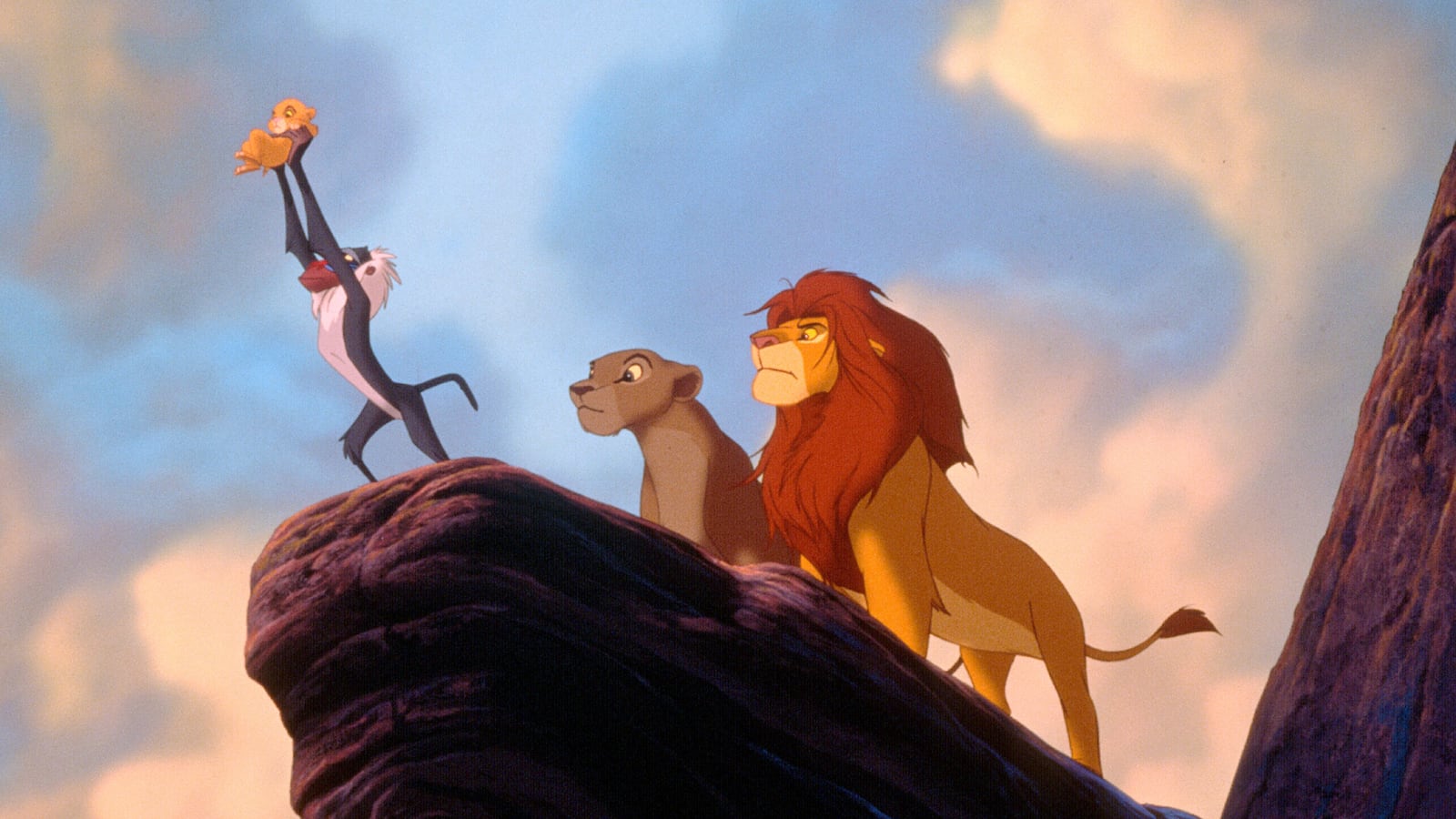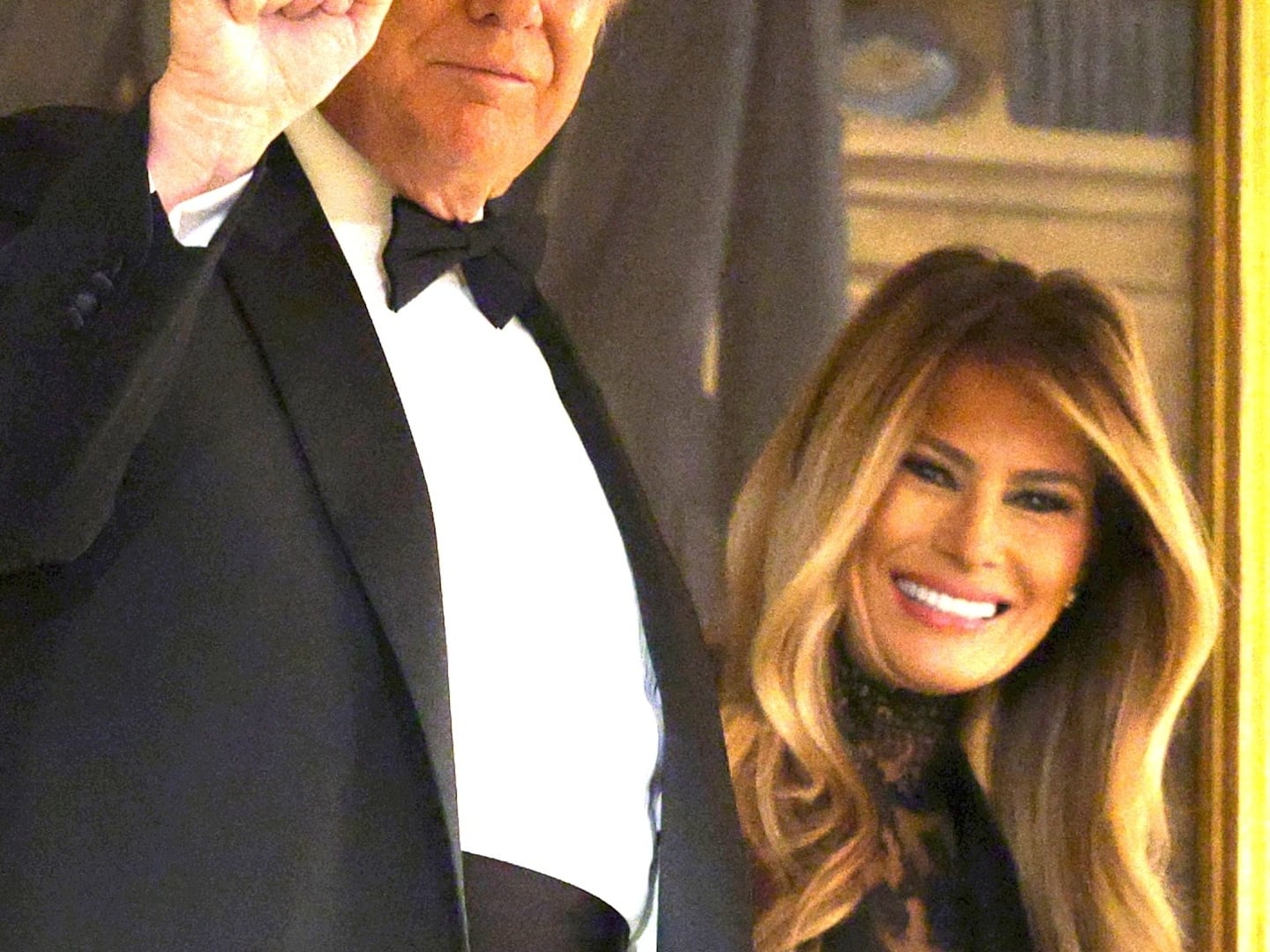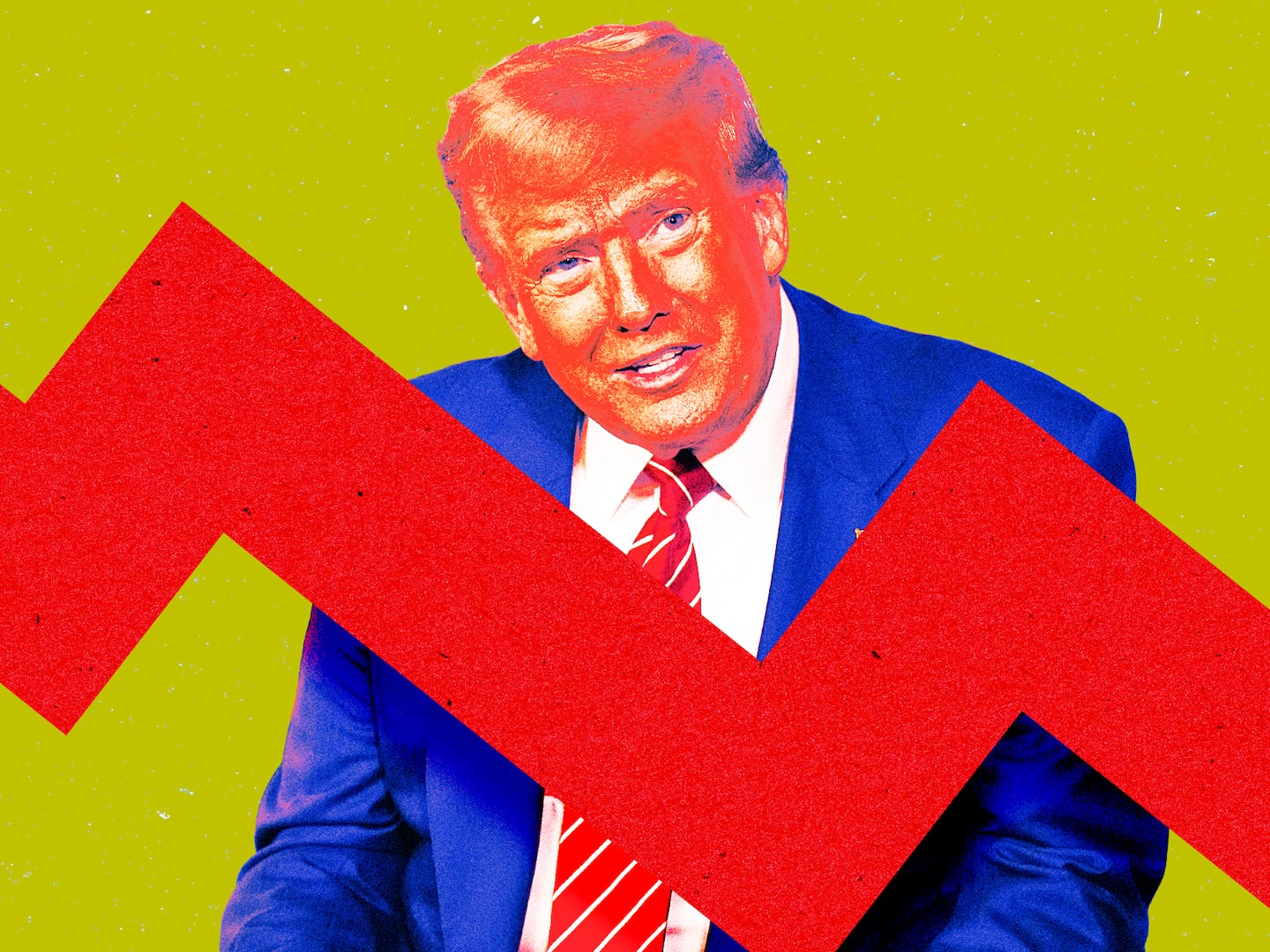It’s been exactly 20 years since The Lion King opened in wide release.
That means it’s been two decades since those first chills we got watching the “Circle of Life” opening sequence, launching years of perfecting our own made up gibberish while attempting to sing along to the Zulu lyrics. It’s been 7,300 days since we first cried all those tears as Simba watched Mufasa fall to his death. And it’s been 175,200 hours since we first grappled with loathing Scar’s evil nature while delighting in Jeremy Irons’ delectable voice work.
That’s not to mention, either, the immeasurable time spent since our first screening dutifully spreading the word of Timon and Pumbaa’s it’s-all-good mantra, hakuna matata.
If you’ve seen The Lion King once, you’ve seen it dozens (and dozens) of times, because there’s no way to stave off the addicting charm offensive that is Irene Mecchi, Jonathan Roberts, and Linda Woolverton’s crackling Hamlet-meets-Bambi script; Elton John and Tim Rice’s Oscar-winning original songs; and the host of iconic voice performances, from James Earl Jones to Nathan Lane, each perfecting that balance of humor and heart. There’s no reason, then, to mark the occasion of the film’s 20th anniversary—dear god, we’re old—by telling you how good the movie is. You’ve seen it countless times; you know.
So instead, we searched the Internet for as many (substantiated) behind-the-scenes stories and trivia that we could find about the film’s surprising development process and blockbuster cultural and commercial impact. Here’s 35 of the strangest, wildest, and most interesting bits of info we could find:
1) Pumbaa was the first Disney character to ever fart on screen. This is probably the most important fact on here.
2) The Lion King was originally titled The King of the Jungle. Blessedly, someone realized that lions don’t actually live in jungles, and so the title was changed. The tagline still lived on in some of the film’s marketing, though. Whoops.
3) If you were in grade school around the time The Lion King was released, you probably lost yourself in giggle fits every time the Savannah’s Three Stooges—hyenas Shenzi, Banzai, and Ed—came on screen. Initially, however, the trio was written with Cheech Marin and Tommy Chong in mind to deliver Shenzi and Banzai’s repartee. The famed comedy duo, however, wasn’t working together at the time, and the reunion wasn’t in the cards. Whoopi Goldberg was then cast as Shenzi opposite Marin’s Banzai, and the rest is hilarious history.
4) Off-screen, there was even more drama when it came to those hyenas. Biologists were not pleased that they were portrayed as villains in the film. One researcher, in defense of the animals, even sued Disney for defamation (PDF) of character. Another, displeased with how the film would affect the hyenas’ reputation, listed boycotting The Lion King among things people could do if they want to help preserve hyenas in the wild.
5) Actors James Earl Jones and Madge Sinclair provided the regal voices for Mufasa and Sarabi, the respective King and Queen of the Pridelands and Simba’s parents. Their royal chemistry shouldn’t be a surprise, though: They also voiced the king and queen in Coming to America.
6) The Lion King got majorly shafted by Disney’s creative team during development. Pocahontas was being produced at the same time and everyone who worked for the studio was more bullish on that project, thinking that the historical roots of the film would make it the more likely to succeed. As such, Disney’s top animators actually worked on Pocahontas, and not The Lion King.
7) There’s a playground legend that, in a scene where Simba flops on the ground, the dust kicks up around and forms the letters “SEX” in a cloud above him. Well, turns out it’s just that: legend. Producers later admitted that there are letters in the dust cloud, but they actually spell “SFX,” a nod to the special effects team that worked on the movie.
8) Nathan Lane and Ernie Sabella, who voiced Timon and Pumbaa, actually wanted to play two of the hyenas. The actors were starring together in Guys and Dolls on Broadway at the time, and ran into each other at the voice audition and convinced the casting director to let them audition as a pair. Their chemistry killed so much that it was decided they would be a far better fit as the famous meerkat-warthog duo.
9) This was the first full-length animated film to be created from an original script idea. OK, there are definitely elements of Hamlet in there. But it was still the first animated Disney movie to not be based on a book or a familiar fairy tale.
10) During early stages of the story creation, the plot was described as “‘Bambi in Africa’ meets Hamlet,” or Bamlet for short.
11) In an original version of the script—back when it was still called King of the Jungle—the plot surrounded a face-off between the lions and the baboons, with Scar as the leader of the primate contingent.
12) One of Pumbaa’s defining characteristics was the way he rubbed his belly. The inspiration for the tick: animator Tony Bancroft’s then-pregnant wife, who would often rub her own protruding belly. Bancroft thought that the action would make Pumbaa more “human and relatable.”
13) “Hakuna Matata” wasn’t planned as Timon and Pumbaa’s signature song. “He’s Got It All Worked Out” was originally written for the duo and was apparently all about how they convince Simba to eat bugs. After taking a trip to Africa, the creative team thought a more enlightened number—namely, “Hakuna Matata”—would fit the film better.
14) It’s ever-popular to travel to the actual locations that our favorite movies and TV shows are based on. (Hello: Sex and the City walking tours, the Cheers bar in Boston, etc.) But don’t waste your airfare on a trip to Africa to see Pride Rock. While the creative team did some landscape research for the film in Kenya, Pride Rock isn’t actually based on a specific place or locale.
15) There’s a famous scene during Scar’s big “Be Prepared” number in which his army of hyenas assemble in linear formation and begin marching. It’s actually inspired by an image of Adolf Hitler watching a Nazi procession.
16) It’s hard to imagine anyone but James Earl Jones providing the infallible Mufasa with his booming, wise voice. But it was Sean Connery who was the first choice to voice the Disney patriarch with the tragic fate.
17) In its first conception, “Can You Feel the Love Tonight” was supposed to be a comedic duet for Timon and Pumbaa. Elton John reportedly rejected that idea, which is how the now-famous love scene between Simba and Nala came to be.
18) “What do you want me to do? Dress in drag and do the hula?” What is possibly Timon’s most famous line was actually improvised by Nathan Lane.
19) The pyramid of animals featured in the big “I Just Can’t Wait to Be King” sequence includes anteaters. It’s cute—if only anteaters were native to Africa. The tongue-y creatures are actually native to South America.
20) Jeremy Irons’ voice performance as Scar is deliciously sinister, whimsically wicked, and, by all accounts and description, brilliant. But Irons actually faced competition from Tim Curry and Malcolm McDowell, who were both considered for the part.
21) Jeremy Irons actually strained his voice while recording dialogue for Scar. When it came time to record “Be Prepared,” his voice was too damaged to finish the song, so Jim Cummings—who recorded the voice of Ed the hyena—actually finished the vocals on the song, imitating Irons’ delivery.
22) The trio of actors in contention to voice Scar is nothing compared to the coterie of comedians that were in the running for Zazu. Patrick Stewart and practically the entire Monty Python brood—John Cleese, Eric Idle, Michael Palin, Terry Jones, and Terry Gilliam—were all considered to voice the snooty bird before animators caught some episodes of Mr. Bean and decided that Rowan Atkinson would be the perfect voice performer.
23) There were several different scripts that had more characters that ended up scrapped for the final version of the film. Among the characters that didn’t make the final cut: a little brother for Nala, a sister for Sarabi, a second meerkat, Nala’s father, a python who was to act as Scar’s sidekick, and a bat-eared fox named Bhati.
24) The Lion King grossed over $768 million worldwide during its initial release, making it the highest-grossing film of 1994. In the U.S., however, it was only the second-highest grossing film, behind Forrest Gump. It was overseas box-office receipts that pushed it over the edge.
25) Though Frozen recently surged to status as the highest-grossing Disney film of all time, The Lion King, which was mostly animated the old-fashioned way, remains the highest-grossing hand-drawn film ever.
26) As it happens, The Lion King was released in the golden age of the VHS (remember the bookshelves lined from end-to-end with those things?). Chalk it up to timing of release and, naturally, how wildly entertaining it is: The film is actually the best-selling home video of all time.
27) The Lion King is the first Disney animated feature that was dubbed in Zulu.
28) The Lion King was the second Disney animated film to win the Golden Globe award for Best Musical or Comedy. (Beauty and the Beast was the first, and only Toy Story 2 has done it since.)
29) The dialogue exchange that best serves to characterize Scar comes when young Simba says, “You’re weird,” and Scar eerily replies, “You have no idea.” It shouldn’t be a surprise that Irons’ line delivery is so perfect there. It’s purposefully the same line he uttered in his Oscar-winning performance as Claus von Bulow in Reversal of Fortune.
30) The film’s plot was close to being a lot more adult. In one draft of the script, the reason Nala is banished from Pride Rock is for spurning Scar’s sexual advances. And you thought Mufasa’s death was tough for kids to handle.
31) There was a bit of a controversy facing Disney when The Lion King opened in Japan and people began pointing out the uncanny similarities between Simba and the lead character from the 1960s Japanese animated TV series Kimba the White Lion. Disney, naturally, balked at the accusations. Though, not helping the case, Matthew Broderick (who voiced adult Simba) once let it slip that he thought Disney was adapting Kimba when he first read the script.
32) The wildebeest stampede used groundbreaking computer animation effects—it’s one of a handful of scenes in the film to supplement hand-drawn cells with computer-generated effects—that took roughly three years to complete. The scene as it plays in the film is just two and a half minutes.
33) As much fun as it is for all of us to make up our own gibberish for the opening chants in “Circle of Life,” there are actual lyrics that mean real things. Here’s the lyric: “Nants ingonyama bagithi Baba / Sithi uhm ingonyama / Nants ingonyama bagithi baba / Sithi uhhmm ingonyama / Ingonyama Siyo Nqoba / Ingonyama Ingonyama nengw enamabala.” And here’s its translation: “Here comes a lion, Father / Oh yes, it’s a lion / Here comes a lion, Father / Oh yes, it’s a lion / A lion We’re going to conquer / A lion A lion and a leopard come to this open place.”
34) This lore was the hardest to find hard proof of, but there are rumors that adult Simba’s studly mane after he goes through puberty in the jungle was modeled after Jon Bon Jovi’s hair.
35) Scar is the only lion in the movie that has claws. Obviously.






